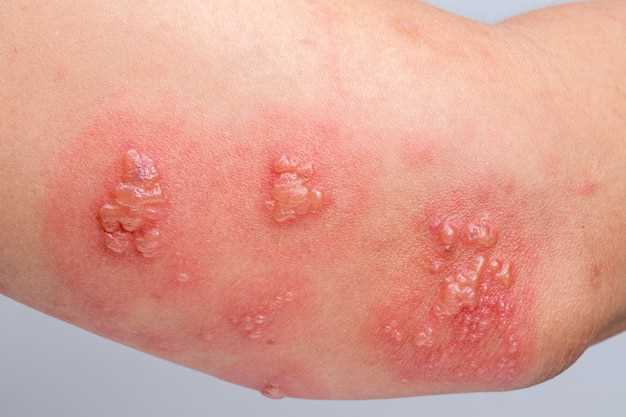
Are you experiencing an uncomfortable rash while taking hydrochlorothiazide?
Don’t worry! We’re here to help.
Hydrochlorothiazide is a commonly prescribed medication for conditions such as high blood pressure and fluid retention. Unfortunately, some people may develop a rash as a side effect of taking this medication.
If you’re concerned about the rash you’re experiencing, it’s important to seek medical advice.
At our specialized clinic, we understand the distress this rash can cause and have a team of experienced dermatologists ready to assist you.
Our comprehensive approach to rash treatment includes:
- Thorough evaluation of your medical history and current medication usage
- Expert diagnosis and identification of the underlying cause
- Personalized treatment plan tailored to your specific needs
- Topical and systemic treatment options
- Ongoing support and follow-up care
Don’t let a rash hold you back from enjoying life. Contact our clinic today to schedule an appointment with one of our skilled dermatologists.
We’re here to provide relief and help you regain your confidence!
The impact of hydrochlorothiazide on skin
Hydrochlorothiazide is a commonly prescribed medication used to treat high blood pressure and edema. While it is generally well-tolerated, some individuals may experience a rash as a side effect of taking hydrochlorothiazide.
The rash with hydrochlorothiazide is known as a drug eruption and can manifest as red, itchy bumps or patches on the skin. It typically occurs within the first few weeks of starting the medication and may vary in severity from mild to severe.
Causes of hydrochlorothiazide-induced rash
The exact cause of the rash with hydrochlorothiazide is not fully understood. It is believed to be an immune-mediated reaction, where the body’s immune system reacts to the medication as if it were a foreign substance.
Some research suggests that certain individuals may have a genetic predisposition to developing a rash with hydrochlorothiazide. Additionally, factors such as age, gender, and underlying skin conditions may also play a role in the development and severity of the rash.
Managing and treating hydrochlorothiazide-induced rash
If you develop a rash while taking hydrochlorothiazide, it is important to consult with your healthcare provider. They will be able to evaluate the severity of the rash and determine the best course of action.
In mild cases, the rash may resolve on its own without any specific treatment. Your healthcare provider may recommend over-the-counter antihistamines or topical creams to alleviate itching and discomfort.
In more severe cases, your healthcare provider may need to discontinue hydrochlorothiazide and prescribe alternative medications to control your blood pressure or manage edema.
It is important to note that you should never stop taking hydrochlorothiazide or any other medication without consulting your healthcare provider first.
Preventing rash with hydrochlorothiazide
If you have a known allergy or sensitivity to hydrochlorothiazide, it is important to inform your healthcare provider before starting the medication. They may recommend alternative medications that are less likely to cause a rash.
Additionally, it is important to practice good skin hygiene and moisturize regularly while taking hydrochlorothiazide. This can help maintain the health of your skin and minimize the risk of developing a rash.
In conclusion, while hydrochlorothiazide is an effective medication for controlling blood pressure and managing edema, it can cause a rash in some individuals. By understanding the impact of hydrochlorothiazide on the skin and taking necessary precautions, you can better manage and prevent the development of a rash while taking this medication.
Understanding the rash with hydrochlorothiazide
Hydrochlorothiazide is a commonly prescribed medication for the treatment of high blood pressure and other conditions. While it is generally well-tolerated, some individuals may experience a rash as a side effect of taking this medication. Understanding the rash with hydrochlorothiazide can help individuals recognize the symptoms and take appropriate action.
The rash with hydrochlorothiazide can present in different ways, ranging from mild to severe. It may appear as small red bumps or dots on the skin, or it may manifest as larger patches or welts. The rash can be itchy, uncomfortable, and may even cause pain or burning sensations.
The severity of the rash can vary from person to person. Some individuals may only experience a mild rash that resolves on its own, while others may develop a more severe rash that requires medical intervention. It is important to pay attention to the symptoms and seek medical advice if necessary.
It is still not fully understood why some individuals develop a rash with hydrochlorothiazide while others do not. It is believed that certain individuals may have an underlying sensitivity or allergic reaction to the medication, which causes the rash to develop.
If you are experiencing a rash with hydrochlorothiazide, it is important to discuss your symptoms with your healthcare provider. They can evaluate the severity of the rash and recommend appropriate treatment options. In some cases, discontinuing the medication may be necessary to resolve the rash and prevent further complications.
It is also important to note that there are alternative medications available for the treatment of high blood pressure and other conditions. If you are unable to tolerate hydrochlorothiazide due to the rash or other side effects, your healthcare provider can work with you to find a suitable alternative.
Overall, understanding the rash with hydrochlorothiazide is essential for individuals who are taking or considering taking this medication. By being aware of the symptoms and seeking prompt medical attention if necessary, individuals can ensure their safety and well-being while receiving the benefits of hydrochlorothiazide for their medical condition.
Symptoms and severity of hydrochlorothiazide-induced rash

When taking hydrochlorothiazide, it is important to be aware of the potential side effect of a rash. This rash can vary in severity and may present with different symptoms.
Some common symptoms of a hydrochlorothiazide-induced rash include:
- Redness: The affected area may appear red and inflamed.
- Itching: The rash can be accompanied by intense itching, which can be quite bothersome.
- Bumps or raised skin: Small bumps or raised areas may be present on the skin.
- Blistering or peeling: In severe cases, the rash may result in blistering or peeling of the skin.
The severity of the hydrochlorothiazide-induced rash can vary from person to person. In some cases, the rash may be mild and cause minimal discomfort. However, in other cases, the rash can be more severe and may require medical attention.
If you experience a rash while taking hydrochlorothiazide, it is important to consult your healthcare provider. They will be able to assess the severity of the rash and determine the best course of treatment.
Do not ignore or dismiss a hydrochlorothiazide-induced rash, as it can be a sign of an allergic reaction or a more serious skin condition.
Remember, always seek medical advice if you have any concerns or experience any unusual symptoms while taking hydrochlorothiazide.
Treatment options for hydrochlorothiazide rash

Dealing with a hydrochlorothiazide-induced rash can be frustrating, but there are several treatment options available to help alleviate symptoms and promote healing. It is important to consult with a healthcare professional to determine the best course of action for your specific situation.
- Discontinuation of hydrochlorothiazide: In some cases, the best treatment option may involve discontinuing the use of hydrochlorothiazide altogether. Your healthcare provider can recommend alternative medications or treatments if necessary.
- Topical corticosteroids: Applying a topical corticosteroid cream or ointment to the affected areas can help reduce inflammation and itching. These medications may require a prescription from your healthcare provider, so it is essential to seek medical advice before using them.
- Antihistamines: Over-the-counter antihistamines like diphenhydramine (Benadryl) can help relieve itching and discomfort associated with the hydrochlorothiazide rash. However, it is essential to follow the recommended dosage and consult with a healthcare provider if you have any underlying medical conditions or are taking other medications.
- Cool compresses: Applying cool compresses to the rash can provide temporary relief from itching and help reduce inflammation. Be sure to use a clean cloth or towel to avoid further irritation or infection.
- Moisturizers: Using fragrance-free and hypoallergenic moisturizers can help soothe dry and irritated skin caused by the rash. Look for products that are specifically designed for sensitive skin types.
- Avoiding triggers: It is important to identify and avoid any triggers or irritants that may exacerbate the rash. This may include certain fabrics, chemicals, or skincare products. Keeping a diary of your symptoms and potential triggers can help you and your healthcare provider better understand your specific situation.
Remember, these treatment options are general suggestions, and it is essential to consult with a healthcare professional for personalized advice and guidance. They can evaluate your symptoms, medical history, and overall health to determine the most appropriate treatment plan for you.
Preventing rash with hydrochlorothiazide
To prevent a rash from developing while taking hydrochlorothiazide, it is important to follow certain precautions:
1. Inform your healthcare provider: It is crucial to inform your healthcare provider about any previous allergic reactions or sensitivities you may have had, especially regarding medications. This will help them determine whether hydrochlorothiazide is suitable for you and if any alternative medications should be considered.
2. Start with a low dose: Your doctor may start you on a low dose of hydrochlorothiazide and gradually increase it if necessary. This will allow your body to adjust to the medication and minimize the risk of developing a rash.
3. Monitor for early signs of rash: Pay attention to any changes in your skin, such as redness, itching, or hives. If you notice any unusual reaction, contact your healthcare provider immediately.
4. Avoid triggers: Certain factors, such as sunlight, heat, or specific foods, may trigger or worsen a rash. Try to identify and avoid these triggers to reduce the likelihood of developing a rash while taking hydrochlorothiazide.
5. Use sunscreen: Apply a broad-spectrum sunscreen with an SPF of 30 or higher before going outside, even on cloudy days. This will help protect your skin from the potential photosensitivity caused by hydrochlorothiazide.
6. Stay hydrated: Drinking plenty of water can help flush out toxins from your body and reduce the risk of rash related to hydrochlorothiazide.
7. Follow a healthy lifestyle: Maintaining a healthy lifestyle, including eating a balanced diet, exercising regularly, and getting enough sleep, can enhance your overall health and potentially minimize the risk of developing a rash.
By following these preventive measures and closely monitoring your skin, you can reduce the chances of experiencing a rash while taking hydrochlorothiazide.
